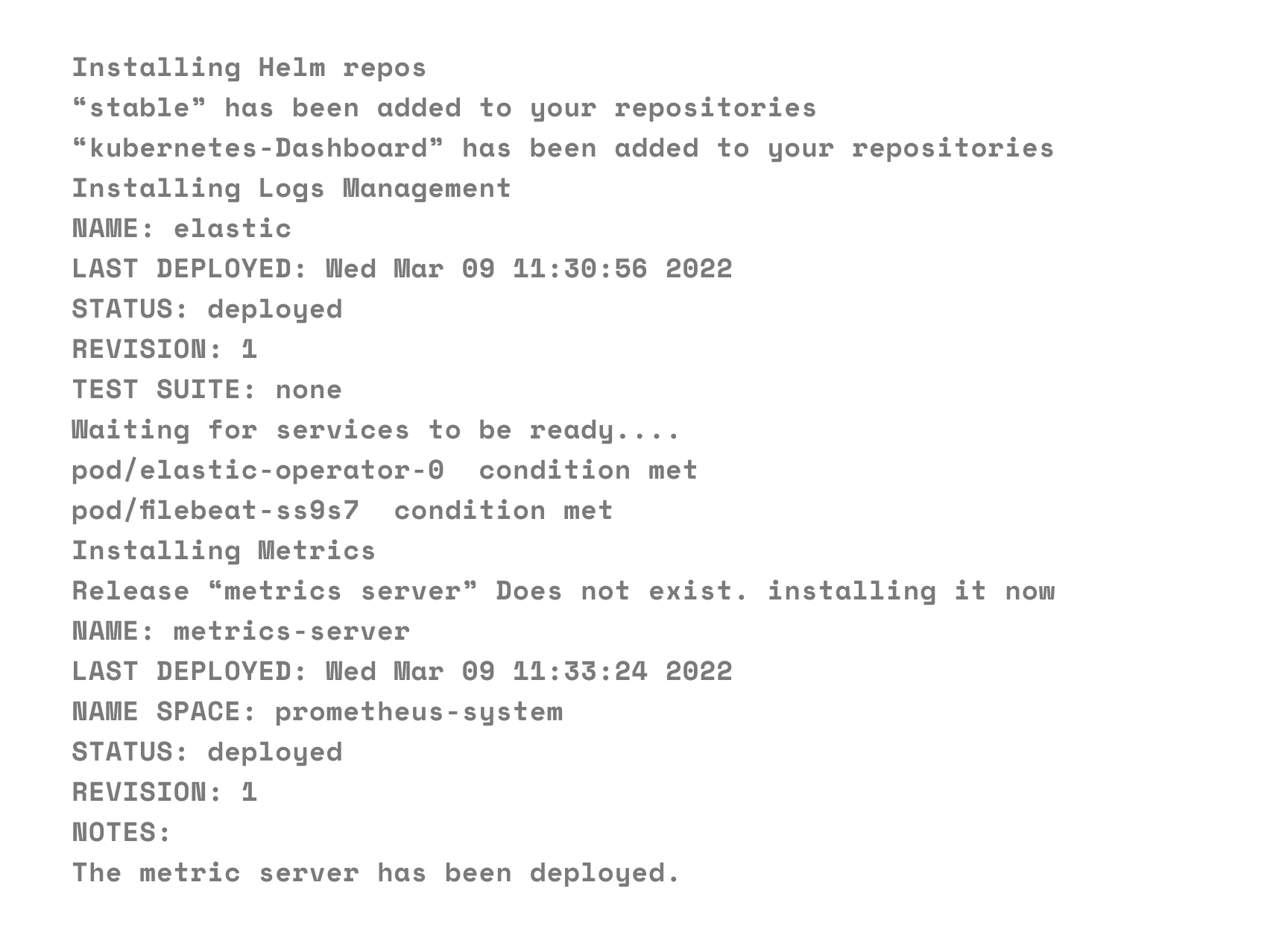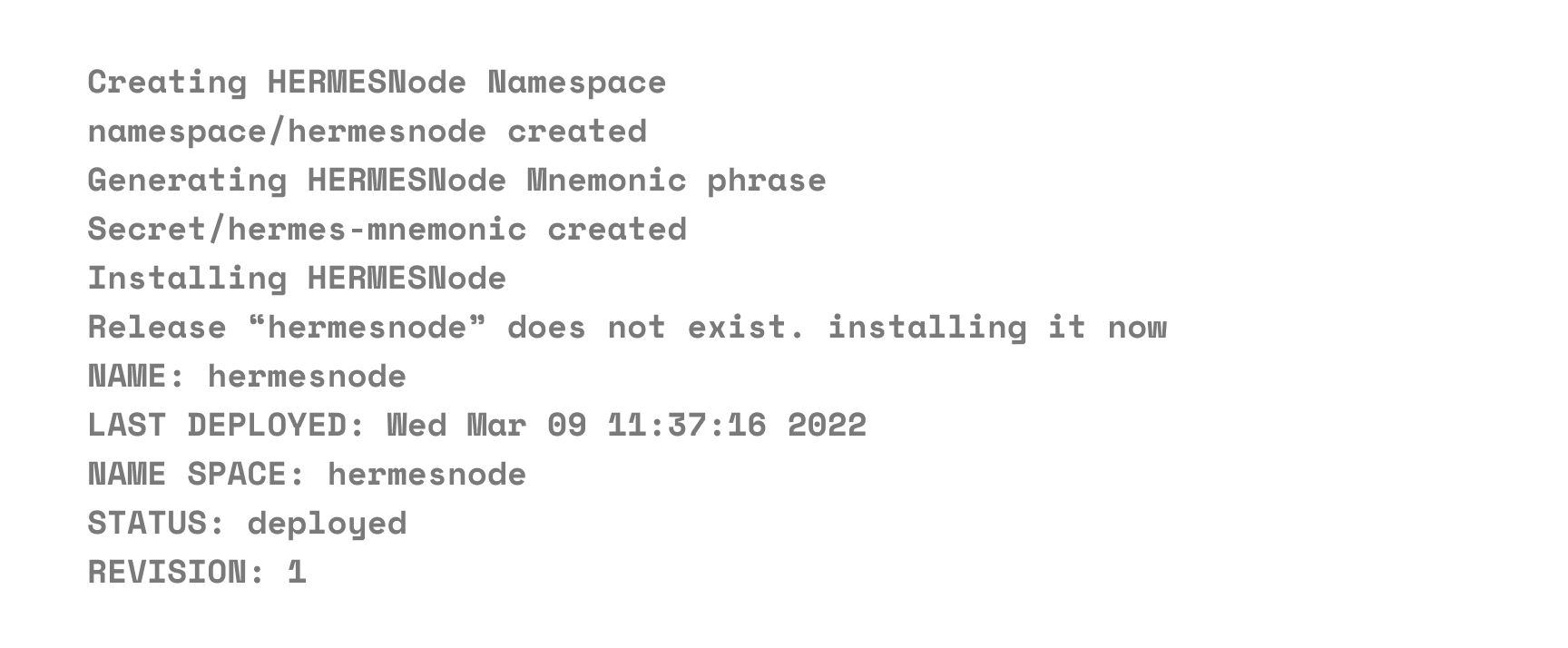Deploying
Deploying a HermesNode and its associated services.
Deploy HermesNode services¶
Now you have a Kubernetes cluster ready to use, you can install the HermesNode services.
Info
Helm charts are the defacto and currently easiest and simple way to package and deploy Kubernetes application. The team created different Helm charts to help to deploy all the necessary services. Please retrieve the source files from the Git repository here to follow the instructions below: https://github.com/dojimanetwork/validator-cluster-launcher
Requirements¶
- Running Kubernetes cluster
- Kubectl configured, ready and connected to running cluster
Info
If you came here from the Setup page, you are already good to go.
Steps¶
Clone the node-launcher repo. All commands in this section are to be run inside of this repo.
git clone https://github.com/dojimanetwork/helm_charts
cd node-launcher
git checkout master
Install Helm 3¶
Install Helm 3 if not already available on your current machine:
make helm
make helm-plugins
Tools¶
To deploy all tools, metrics, logs management, Kubernetes Dashboard, run the command below.
make tools
To destroy all those resources run the command below.
make destroy-tools
If you are successful, you will see the following message:

If there are any errors, they are typically fixed by running the command again.
Deploy HermesNode¶
It is important to deploy the tools first before deploying the HermesNode services as some services will have metrics configuration that would fail and stop the HermesNode deployment.
You have multiple commands available to deploy different configurations of HermesNode. You can deploy testnet or chaosnet/mainnet. The commands deploy the umbrella chart hermesnode-stack in the background in the Kubernetes namespace hermesnode (or hermesnode-testnet for testnet) by default.
make install
Info
If you are intending to run all chain clients, bond in & earn rewards, you want to choose “Validator”.
Info
Deploying a HermesNode will take 1 day for every 3 months of ledger history, since it will validate every block. HermesNodes are “full nodes”, not light clients.
If successful, you will see the following:

Debugging¶
Info
Set hermesnode to be your default namespace so you don’t need to type -n hermesnode each time: kubectl config set-context –current –namespace=hermesnode
Use the following useful commands to view and debug accordingly. You should see everything running and active. Logs can be retrieved to find errors:
kubectl get pods -n hermesnode
kubectl get pods --all-namespaces
kubectl logs -f <pod> -n hermesnode
Kubernetes should automatically restart any service, but you can force a restart by running:
kubectl delete pod <pod> -n hermesnode
Warning
Note, to expedite syncing external chains, it is feasible to continually delete the pod that has the slow-syncing chain daemon (eg, binance-daemon-xxx). Killing it will automatically restart it with free resources and syncing is notably faster. You can check sync status by viewing logs for the client to find the synced chain tip and comparing it with the real-world blockheight, (“xxx” is your unique ID):
kubectl logs -f binance-daemon-xxx -n hermesnode
Info
Get real-world blockheights on the external blockchain explorers, eg: https://testnet-explorer.binance.org/
CHART SUMMARY¶
HermesNode full stack umbrella chart¶
- hermesnode: Umbrella chart packaging all services needed to run a fullnode or validator HermesNode.
This should be the only chart used to run HermesNode stack unless you know what you are doing and want to run each chart separately (not recommended).
HermesNode services:
- hermes-daemon: HermesNode daemon
- hermes-api: HermesNode API
- hermes-gateway: HermesNode gateway proxy to get a single IP address for multiple deployments
- narada: Narada service
External services:
- binance-daemon: Binance fullnode daemon
- bitcoin-daemon: Bitcoin fullnode daemon
- ethereum-daemon: Ethereum fullnode daemon
- chain-daemon: as required for supported chains
Tools¶
- elastic: ELK stack, deperecated. Use elastic-operator chart
- elastic-operator: ELK stack using operator for logs management
- prometheus: Prometheus stack for metrics
- loki: Loki stack for logs
- kubernetes-dashboard: Kubernetes dashboard